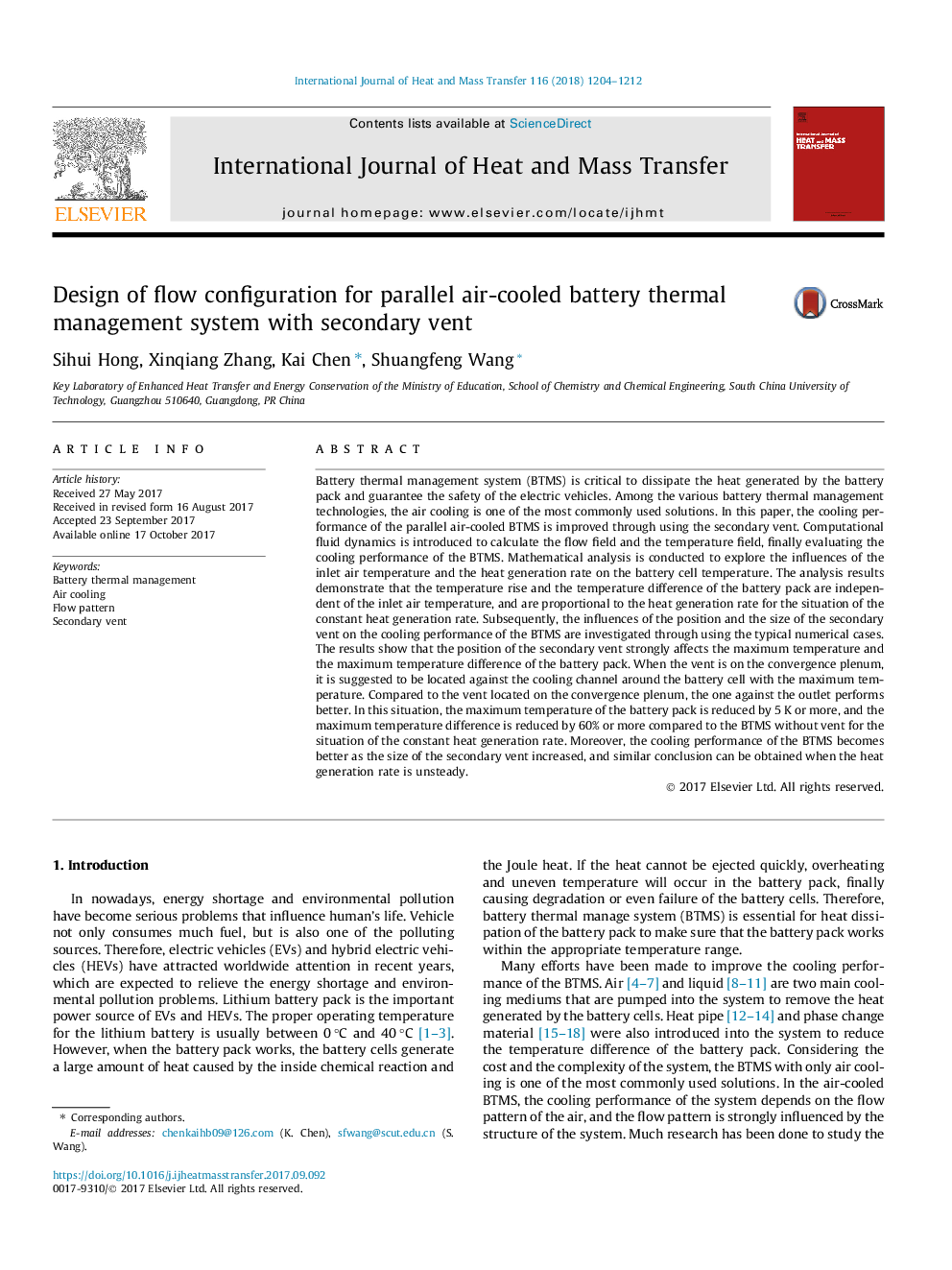| کد مقاله | کد نشریه | سال انتشار | مقاله انگلیسی | نسخه تمام متن |
|---|---|---|---|---|
| 4993832 | 1458024 | 2018 | 9 صفحه PDF | دانلود رایگان |
عنوان انگلیسی مقاله ISI
Design of flow configuration for parallel air-cooled battery thermal management system with secondary vent
ترجمه فارسی عنوان
طراحی پیکربندی جریان برای سیستم مدیریت حرارتی باطری موازی با هوا با خنک کننده ثانویه
دانلود مقاله + سفارش ترجمه
دانلود مقاله ISI انگلیسی
رایگان برای ایرانیان
کلمات کلیدی
مدیریت حرارتی باتری، خنک کننده هوا، الگوی جریان، دریچه ثانویه،
موضوعات مرتبط
مهندسی و علوم پایه
مهندسی شیمی
جریان سیال و فرایندهای انتقال
چکیده انگلیسی
Battery thermal management system (BTMS) is critical to dissipate the heat generated by the battery pack and guarantee the safety of the electric vehicles. Among the various battery thermal management technologies, the air cooling is one of the most commonly used solutions. In this paper, the cooling performance of the parallel air-cooled BTMS is improved through using the secondary vent. Computational fluid dynamics is introduced to calculate the flow field and the temperature field, finally evaluating the cooling performance of the BTMS. Mathematical analysis is conducted to explore the influences of the inlet air temperature and the heat generation rate on the battery cell temperature. The analysis results demonstrate that the temperature rise and the temperature difference of the battery pack are independent of the inlet air temperature, and are proportional to the heat generation rate for the situation of the constant heat generation rate. Subsequently, the influences of the position and the size of the secondary vent on the cooling performance of the BTMS are investigated through using the typical numerical cases. The results show that the position of the secondary vent strongly affects the maximum temperature and the maximum temperature difference of the battery pack. When the vent is on the convergence plenum, it is suggested to be located against the cooling channel around the battery cell with the maximum temperature. Compared to the vent located on the convergence plenum, the one against the outlet performs better. In this situation, the maximum temperature of the battery pack is reduced by 5Â K or more, and the maximum temperature difference is reduced by 60% or more compared to the BTMS without vent for the situation of the constant heat generation rate. Moreover, the cooling performance of the BTMS becomes better as the size of the secondary vent increased, and similar conclusion can be obtained when the heat generation rate is unsteady.
ناشر
Database: Elsevier - ScienceDirect (ساینس دایرکت)
Journal: International Journal of Heat and Mass Transfer - Volume 116, January 2018, Pages 1204-1212
Journal: International Journal of Heat and Mass Transfer - Volume 116, January 2018, Pages 1204-1212
نویسندگان
Sihui Hong, Xinqiang Zhang, Kai Chen, Shuangfeng Wang,
